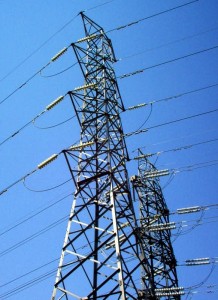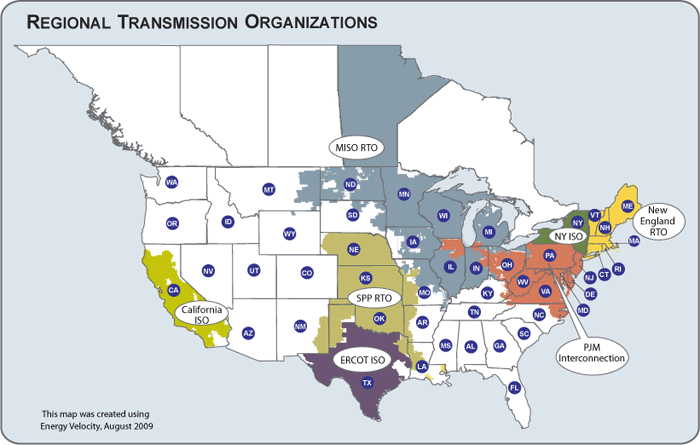Legal Analysis of CAISO Expansion
We don’t foresee changes to FERC jurisdiction or Commerce Clause validity
 The California Independent System Operator — known as CAISO — is considering expanding its footprint to include Pacific Corp as a participating transmission owner. CAISO recently commissioned a study that Professor William Boyd of the University of Colorado and I authored, in consultation with Ethan Elkind of Berkeley and UCLA and Sho Sato Professor Dan Farber of Berkeley Law, to evaluate two important legal questions about the expansion. One question is whether the expansion would alter the Federal Energy Regulatory Commission’s jurisdiction over California’s environmental policies that affect electricity; the second is whether the expansion would change the constitutionality of California’s environmental policies under the Commerce Clause. Our conclusion, contained in this lengthy analysis available on the CAISO website, is that the proposed expansion would neither change the legality of California’s polices nor their constitutionality. Because FERC already has jurisdiction over CAISO and because California electricity already travels in interstate commerce and is therefore subject to the Commerce Clause, the legal analysis is the same whether CAISO retains its current footprint or expands to include the Pacific Corp transmission assets.
The California Independent System Operator — known as CAISO — is considering expanding its footprint to include Pacific Corp as a participating transmission owner. CAISO recently commissioned a study that Professor William Boyd of the University of Colorado and I authored, in consultation with Ethan Elkind of Berkeley and UCLA and Sho Sato Professor Dan Farber of Berkeley Law, to evaluate two important legal questions about the expansion. One question is whether the expansion would alter the Federal Energy Regulatory Commission’s jurisdiction over California’s environmental policies that affect electricity; the second is whether the expansion would change the constitutionality of California’s environmental policies under the Commerce Clause. Our conclusion, contained in this lengthy analysis available on the CAISO website, is that the proposed expansion would neither change the legality of California’s polices nor their constitutionality. Because FERC already has jurisdiction over CAISO and because California electricity already travels in interstate commerce and is therefore subject to the Commerce Clause, the legal analysis is the same whether CAISO retains its current footprint or expands to include the Pacific Corp transmission assets.
Though the subject of the operation of California’s bulk transmission grid is a technical one, it is also extremely important. CAISO currently operates the bulk transmission grid for 80 percent of California and a small part of western Nevada. CAISO is a non-profit organization that is regulated as an independent system operator (ISO) under federal law. Many other states across the U.S. (and provinces in Canada) also participate in ISOs or Regional Transmission Organizations (RTO), making our legal analysis relevant beyond the CAISO setting. RTOs and ISOs were established at the encouragement of FERC to operate the transmission grid in a independent manner that does not favor any particular utility, and to facilitate competition in the provision of wholesale electricity (among other functions). Here is a map of the RTOs/ISOs in the U.S.:

If PacificCorp were to become a participating transmission owner in CAISO, CAISO would expand beyond California and a small part of Nevada to include transmission assets in Idaho, Oregon, Utah, Washington, and Wyoming.
Last year, the California Legislature under SB 350 expanded California’s Renewable Portfolio Standard to require its investor-owned utilities to get 50 percent of their electricity from renewable resources by 2030. As part of the legislation expanding the RPS, the legislature endorsed the idea of having CAISO expand regionally over the next several years if certain conditions were met. Importantly, the legislation required CAISO to study the economic and environmental impacts of such an expansion. The bill also ordered CAISO to submit a plan to the Governor about how it would need to change its governance structure and bylaws in order to implement any expansion. The Governor would, in turn, forward the studies to the Legislature. Those studies are due at the end of 2017. SB 350 also made clear that any expansion of CAISO must be approved by the legislature. CAISO commissioned our legal analysis as part of its efforts to study the effects of expanding its footprint.
Governor Brown has informed the leaders of the California Legislature that CAISO will work with other relevant state agencies to submit proposed changes to its bylaws and governance by January of 2017. In the mean time, CAISO has completed its economic and environmental analyses, which generally support its expansion. CAISO expansion is not without controversy — legislative leaders want to ensure that California can continue to implement the state’s aggressive policies to reduce greenhouse gas emissions from its electricity sector. Our analysis concludes that — from a legal perspective — CAISO should not face any new obstacles in doing so should the expansion take place.
Reader Comments
3 Replies to “Legal Analysis of CAISO Expansion”
Comments are closed.







How would this expansion affect the renewables percentage calculation?
Would the out-of-state stuff be included?
Renewable energy projects fail to mitigate climate change and are a tremendous waste of public money and resources. All of the renewable energy projects throughout the world combined over the last 40 years have not made a single dent in climate change. Sunspots and other natural forces drive global climate, not carbon dioxide, and that is why renewables have no perceptible effect on climate and never will.
California’s carbon dioxide regulatory schemes and taxes are simply another very expensive but otherwise ordinary government boondoggle and rip-off, which have become customary and acceptable to the members of the California Environmental Bar and the state’s liberal citizenry.
Thanks for your thoughtful analysis, Ann. While I agree that the CAISO expansion is important to facilitate the increased RPS targets for California utilities, it’s a short-term solution to a long term problem. Ultimately, to accommodate 50%+ renewables, we need more transmission, more storage and other distributed energy resources, or both. CAISO is kicking the can–though I’m glad you concluded that its punt is lawful.
In response to the first commenter above, the CAISO expansion will not affect California’s GHG reduction targets or RPS standards for California utilities.